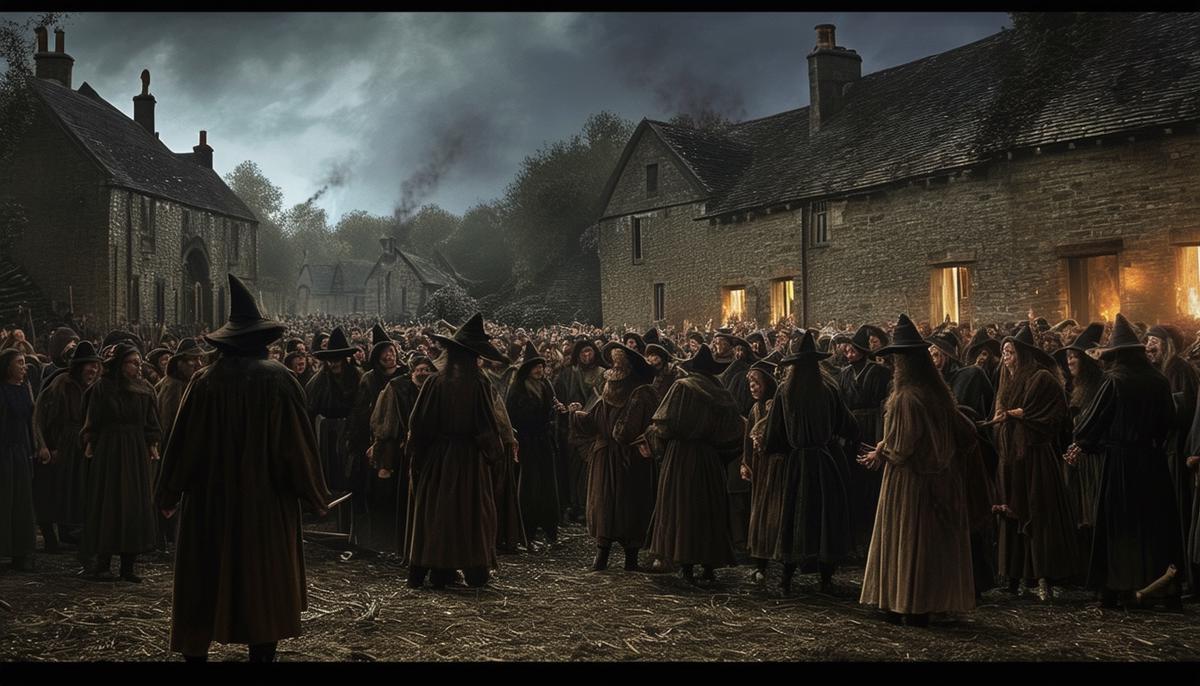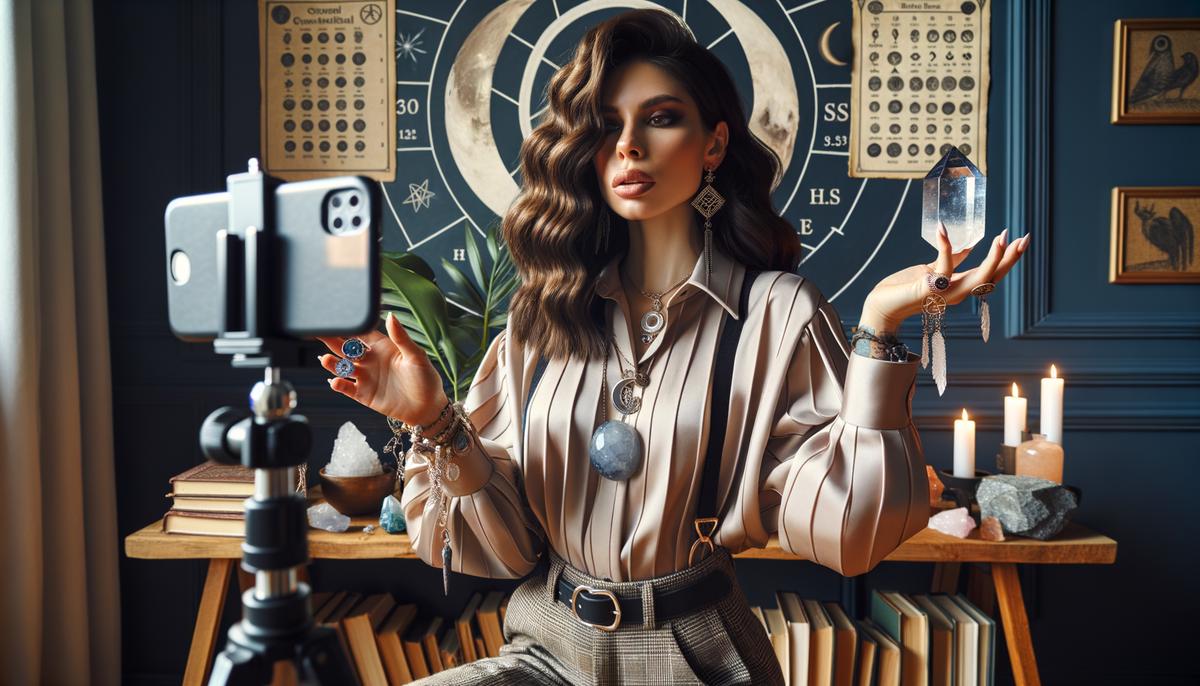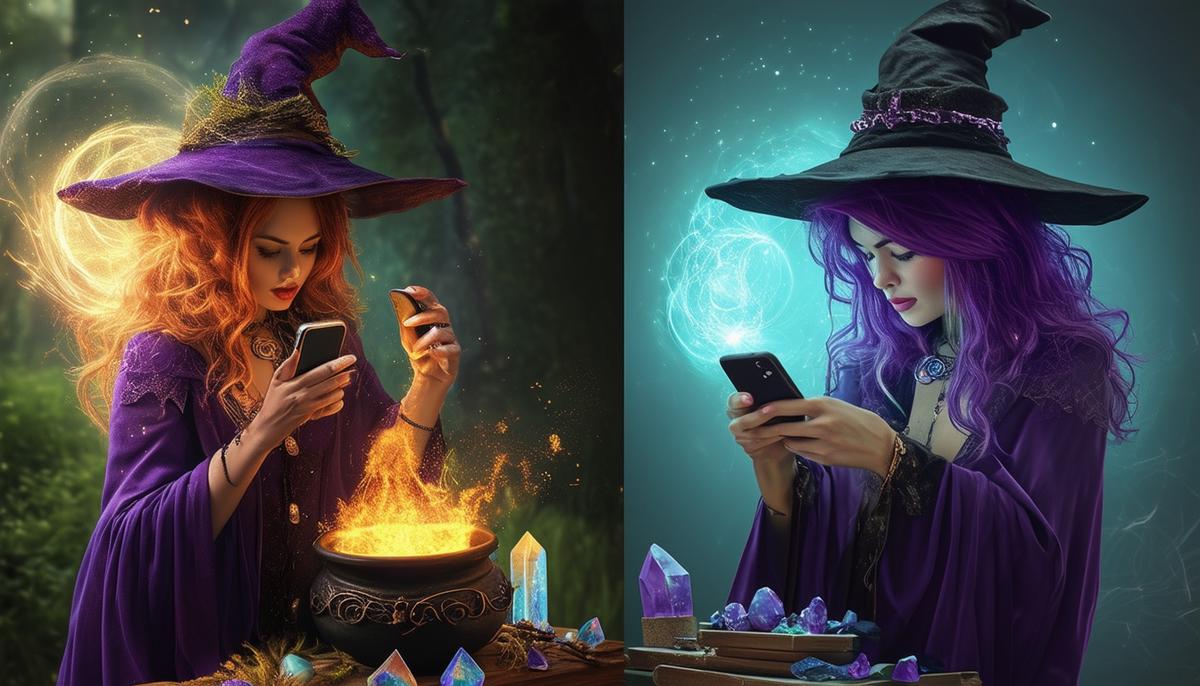Traditional Signs of a Witch
Eye of newt, wing of bat, and a bubbling cauldron—classic witch signs straight out of spooky storybooks. But there's more to these old markers than just magic and mayhem.
The pointed hat, historically a common farmer's accessory, got a sinister rebranding during witch hunts. Broomsticks, associated with women's homebound roles, were exaggerated into fantastical flying devices. Cauldrons, used for everyday cooking and medicine, became symbols of dark brews.
The Pendle witch trials of 1612 offer a chilling glimpse into paranoia run amok. Based largely on hearsay and superstition, ten people were hanged for alleged witchcraft. Physical features like warts, in an era of limited medical knowledge, could be enough to spark accusations.
These misinterpretations shaped the cruel treatment of the accused. Imagine facing execution because of a neighbor's whisper or an unusual glance. The historical markers of witches—pointed hats, broomsticks, warts, and cauldrons—fed societal fears rather than reflecting true spiritual practices. The real victims were ordinary people, suddenly branded by folklore and unfounded terrors.

Modern Signs of a Witch
Today's witch is a far cry from the sinister crone of old. Modern witches embrace both ancient wisdom and contemporary flair, with crystal necklaces, moon phase charts, and spellbinding Instagram feeds.
Crystals are perhaps the most recognizable modern witch tool. Each stone is believed to harbor specific energies, influencing everything from love to creativity. Manifestation techniques have surged in popularity, fueled by books, videos, and #WitchTok trends. Practitioners use methods like scripting and vision boards to channel their intentions into reality.
Social media platforms have become virtual covens. With billions of views on hashtags like #WitchTok, witches share tips, perform spells, and debunk misconceptions about their craft. This visibility has normalized witchcraft, bringing it out of the shadows and into the spotlight.
Common practices of modern witches:
- Daily affirmations and spiritual routines
- Mindful stretching and herbal teas
- Evening spells under a new moon
- Celebrating ancient sabbats
- Marking the wheel of the year with rituals
Online communities and virtual covens allow witches to share knowledge and support each other globally. Yet, many maintain respect for tradition, celebrating ancient sabbats and marking the wheel of the year with rituals and gatherings.
The modern witch is a testament to how spiritual practices can adapt and thrive in the digital age. They conjure a new kind of magic—one that blends the old world with the new, drawing on diverse tools to navigate life's mysteries.

Differences Between Traditional and Modern Witchcraft
The evolution from traditional to modern witchcraft reveals striking contrasts. Historically, witchcraft was deeply intertwined with community rhythms and fears. Today, it embraces individualistic expressions catering to personal spiritual journeys.
| Traditional Witchcraft | Modern Witchcraft |
|---|---|
| Centered on agricultural calendars and natural cycles | Embraces a wider array of tools (crystals, Tarot, digital lunar calendars) |
| Operated in secrecy, wisdom passed down orally | Enjoys relative openness, sharing beliefs on social media |
| Often persecuted by dominant religions | Positions itself outside organized religious frameworks |
| Feared and suspected in society | Often celebrated in popular culture as stylish and empowered |
Philosophically, traditional witchcraft operated in secrecy, with wisdom passed down orally through generations. Persecution was rampant, and secrecy was crucial. Modern witches enjoy relative openness, sharing beliefs and practices freely on social media platforms. This transparency has helped shed the sinister stigmas of the past.
The role of organized religion versus individual practice marks another significant difference. Historically, dominant religions persecuted witchcraft, as seen in infamous witch trials. Modern witchcraft often positions itself outside organized religious frameworks, embracing a diverse mix of beliefs and encouraging custom spiritual journeys.
Social perception has dramatically shifted. Once feared and suspected, witches are now often celebrated in popular culture as stylish, wise, and empowered beings.
This transition reveals how spiritual pursuits can evolve, adapting to the times while preserving the essence of human yearning for connection, wisdom, and a touch of magic.
As we journey through the history and transformation of witchcraft, it becomes clear that the essence of these practices has always been about connecting with something greater. Whether through ancient rituals or modern spiritual tools, the pursuit remains a blend of mystery and personal growth. The symbols may change, but the human desire for understanding and connection endures.
"Contemporary Pagans feel a strong connection to the past and look to those pre-Christian practices and cultures and spirituality as inspiration for what they're trying to recover, find again or create anew."
This evolution of witchcraft reflects broader societal changes. As we move towards more individualistic and diverse expressions of spirituality, witchcraft has adapted, offering a path that honors ancient wisdom while embracing modern sensibilities. The witch of today is as likely to be found meditating with a crystal as stirring a cauldron, proving that magic, in all its forms, continues to captivate and empower.
- Calico J. Being Viking: Heathenism in Contemporary America. University Press; 2018.
- Magliocco S. Witching Culture: Folklore and Neo-Paganism in America. University of Pennsylvania Press; 2004.
- Adler M. Drawing Down the Moon: Witches, Druids, Goddess-Worshippers, and Other Pagans in America Today. Penguin Books; 2006.

